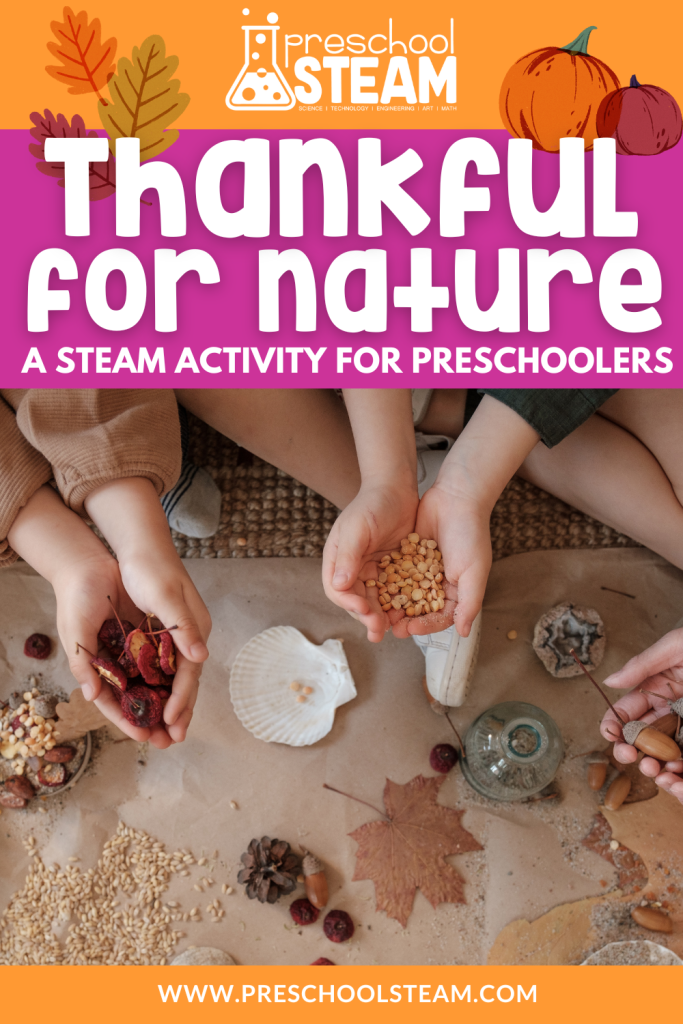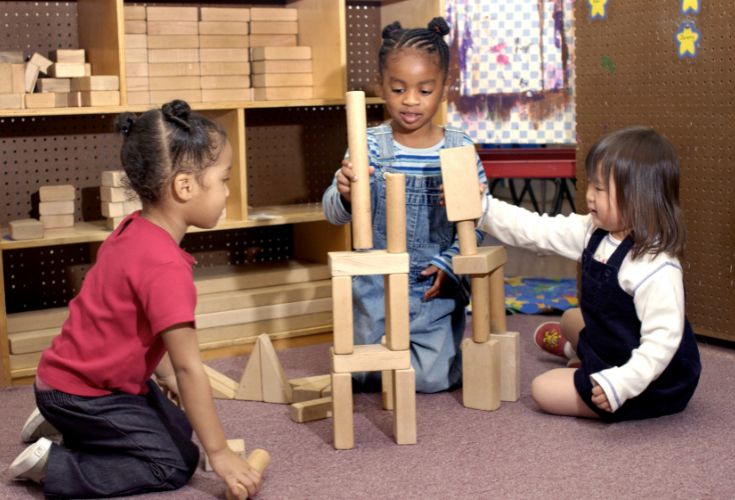As the leaves change color and the air turns crisp, November brings a natural sense of reflection and gratitude. Thanksgiving, in particular, is a time to pause and appreciate the abundance around us—not only in our homes and communities but also in the natural world. For young children, this season provides a perfect opportunity to teach them to be thankful for the Earth and all the gifts it gives us, from the harvest of fruits and vegetables to the beauty of autumn leaves.
In this post, we’ll explore how to bring the spirit of Thanksgiving into your preschool classroom by fostering gratitude for nature. Through simple activities and thoughtful discussions, you can help your preschoolers connect with the changing season and develop a sense of appreciation for the environment. We’ll also share ways to encourage environmental stewardship, teaching children to care for the Earth as a way of giving thanks.

Why November Is the Perfect Time to Be Thankful for Nature
1. Celebrating the Harvest November is often associated with the harvest—the season when farmers gather crops and prepare for winter. It’s a time to celebrate the abundance that the Earth provides, from pumpkins and apples to the grains that make our bread. For preschoolers, this connection to the harvest helps them see how the food they eat comes from the Earth and how nature sustains us.
During this season, we can teach children to be thankful not only for the food on their plates but also for the soil, water, and sunshine that help plants grow. By recognizing the Earth’s role in providing for us, children develop a deeper appreciation for the natural world.
2. The Beauty of Autumn Autumn is a season of transformation, and the beauty of fall leaves, cooler temperatures, and golden sunsets can spark a sense of wonder in young learners. Teaching children to notice and appreciate the changing landscape around them encourages mindfulness and gratitude for nature’s cycles.
By focusing on the seasonal changes of autumn, we can help preschoolers reflect on the gifts that the Earth offers year-round, from spring blooms to winter snowfalls. November is the perfect time to nurture this sense of awe and gratitude as part of the Thanksgiving season.
3. Gratitude and Environmental Stewardship Thanksgiving isn’t just about giving thanks—it’s also about recognizing our responsibility to care for the world around us. By teaching children to be thankful for nature, we naturally introduce the concept of environmental stewardship. When we express gratitude for the Earth, we also acknowledge the need to protect and preserve it for future generations.
November is a wonderful time to introduce children to the idea that taking care of the Earth—whether by recycling, planting trees, or conserving water—is one way we can show our thanks.
How to Bring a Thanksgiving Twist to Nature Appreciation
Here are a few seasonal activities and ideas to help you incorporate the themes of autumn and Thanksgiving into your lessons on gratitude for nature.
1. Thanksgiving Nature Gratitude Circle
In keeping with the spirit of Thanksgiving, create a special Thanksgiving Nature Gratitude Circle where children can express what they are thankful for in the natural world. Set up the circle with autumn-themed decorations, such as pumpkins, gourds, pinecones, and colorful fall leaves.
During the circle, ask each child to share something they are thankful for in nature. You can prompt them with questions like:
- “What part of nature are you most thankful for this autumn?”
- “How does the Earth help us celebrate Thanksgiving?”
- “What foods do we enjoy on Thanksgiving that come from the Earth?”
This seasonal twist on a gratitude circle helps children connect the theme of Thanksgiving with their appreciation for nature’s gifts.
2. Create a Thankful for Nature Harvest Mural
Celebrate the bounty of the season by creating a Thankful for Nature Harvest Mural. Using large pieces of paper, invite children to draw or paint foods that come from the Earth, such as apples, pumpkins, corn, and wheat. You can also collect leaves, pinecones, and other natural items to include in the mural.
As the mural takes shape, talk with the children about how the Earth provides us with the food we enjoy during Thanksgiving. Display the mural in your classroom as a reminder of the importance of nature in our daily lives.
3. Take an Autumn Nature Walk
November is the perfect time to take your preschoolers on an Autumn Nature Walk to observe the changing season. As you walk, encourage the children to notice the colors of the leaves, the chill in the air, and the sights and sounds of fall. Collect acorns, leaves, and other natural objects that can be used for classroom activities.
During the walk, ask children to think about what they are thankful for in nature during this time of year:
- “What do you notice about the trees in the fall?”
- “How does nature change as the weather gets colder?”
- “What are you most thankful for on this walk?”
After the walk, invite the children to draw pictures or write about what they observed and what made them feel thankful.
Teaching Environmental Stewardship This Thanksgiving
As part of your Thanksgiving lessons, you can introduce the concept of environmental stewardship—caring for the Earth as a way to give thanks. Here are a few simple ways to encourage preschoolers to show gratitude for the planet:
1. Practice Thankful Acts for the Earth
Help your preschoolers take action to care for the Earth by teaching them simple, eco-friendly habits. Encourage them to:
- Recycle paper and plastic materials in the classroom.
- Conserve water by turning off the faucet when brushing their teeth or washing their hands.
- Clean up outdoor spaces by picking up litter in the playground or during a nature walk.
Explain that these small acts of care show our gratitude for the Earth’s gifts and help protect the environment for future Thanksgivings.
2. Read Thanksgiving-Themed Books About Nature
There are many wonderful children’s books that tie together the themes of Thanksgiving, gratitude, and nature. Here are a few to consider:
- “In November” by Cynthia Rylant: This poetic book beautifully captures the changes in nature during November and the traditions of Thanksgiving.
- “Thank You, Earth: A Love Letter to Our Planet” by April Pulley Sayre: This book encourages gratitude for the planet and its many gifts, making it a perfect addition to your Thanksgiving-themed lessons.
- “We Gather Together: Celebrating the Harvest Season” by Wendy Pfeffer: This book explains the history and significance of harvest festivals, including Thanksgiving, while connecting children to the natural world.
Reading these books together provides an opportunity to reflect on how the Earth supports us and why it’s important to give thanks.
3. Plant for the Future
While autumn is a time of harvest, it can also be a time for planting seeds for the future. Consider planting bulbs or trees in your outdoor space to show your gratitude for nature. Explain to your preschoolers that planting trees or flowers is a way to give back to the Earth and help it continue to grow and provide for us.
Ask children:
- “Why do you think planting trees is a way to show thanks to the Earth?”
- “How do trees help us and other animals?”
This hands-on activity gives children a concrete way to contribute to the environment and see the long-term effects of their actions.
Celebrating Thanksgiving with Gratitude for Nature
As we celebrate Thanksgiving, it’s the perfect time to reflect on all that the Earth provides for us—clean air, fresh water, food, and beauty. By teaching preschoolers to be thankful for nature, we help them develop a deeper connection to the environment and a sense of responsibility to care for it.
This Thanksgiving, use the season’s themes of gratitude and harvest to inspire lessons on environmental stewardship, mindfulness, and appreciation for the Earth. Through activities like nature walks, gratitude circles, and art projects, you can help your preschoolers embrace the beauty and abundance of nature and understand why it’s so important to protect it.For more ideas on how to bring the wonders of nature into your classroom, explore our member-exclusive Preschool STEAM Play Guide, where we combine hands-on activities with play-based learning to foster curiosity and appreciation for the natural world.

Leave a Reply